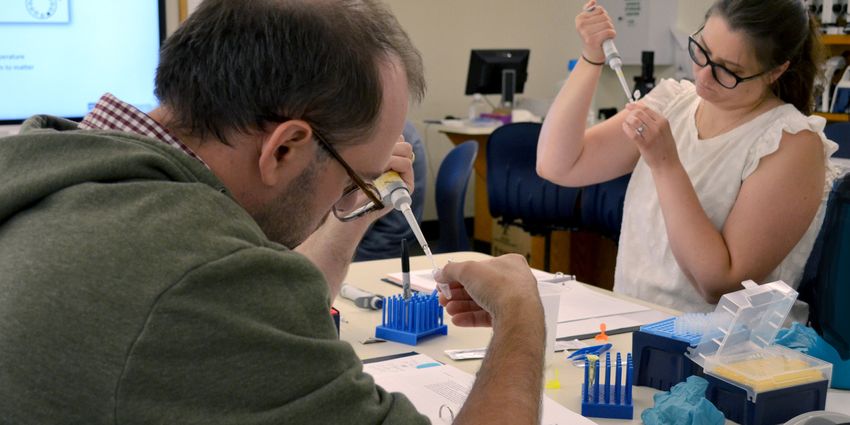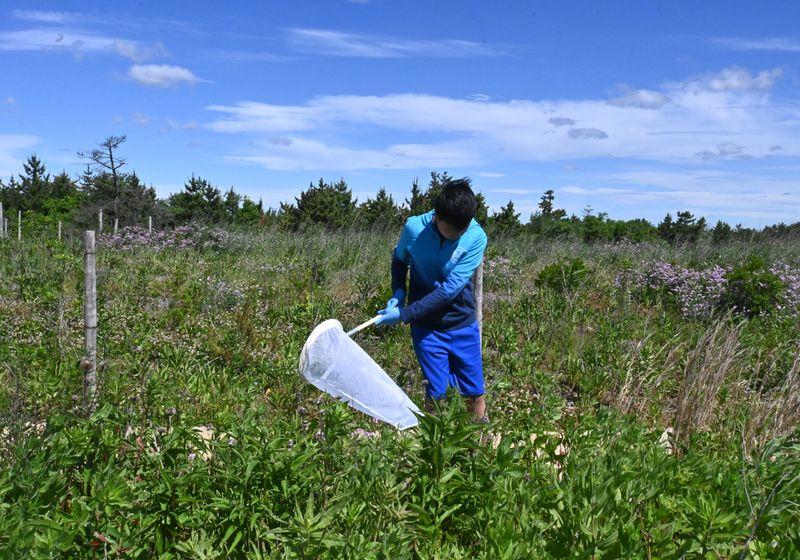DNA barcoding allows researchers to identify the species of a given specimen using short regions of its DNA. The Cold Spring Harbor Laboratory DNA Learning Center, an outreach center dedicated to bringing genetics education to the public, launched two high school programs in 2011 that encouraged students to design research projects using DNA barcoding, such as studying differences in biodiversity in ants at two different sites.

CDBN trained teachers how to perform DNA extraction of insects and plants for DNA barcoding to identify the species of their samples. Teachers bring these skills into their classrooms to do DNA barcoding with their students.
Cold Spring Harbor Laboratory DNA Learning Center
Wanting to expand this program to more people, which could help provide additional unique species entries, the learning center team launched a pilot program focused on collecting ants in 2019. In its first year, the project collected nearly 320 ants, with the majority of those representing unique barcodes. With this success, the team expanded this project into the current Citizen DNA Barcode Network (CDBN), including mosquitoes and beetles into their target specimens, though they accept samples from other insects as well. “There’s only one of me, but there are, you know, many, many, many, many, many citizen scientists,” said Jeffry Petracca, an entomologist and the project manager for the CDBN.
A major goal of the CDBN, in addition to providing more thorough references for species identification, is to identify these insects outside of their normal geographic ranges. Every year, the learning center selects a partner institution to serve as a hub that carries out barcoding activities in its community. They also provide funding for smaller programs at nature centers and schools. Through these collaborations, CDBN has reached more than 1,000 science enthusiasts across the country to teach them about DNA barcoding and help researchers collect more novel specimens and track changes in these insects’ habitats.
One challenge in finalizing and publishing the sequences is in verifying the barcodes. “Insects are ridiculously difficult to identify,” Petracca said, explaining that this process requires an expert on a species to be able to confirm the sequences, but for some, there is simply no one with that expertise. “On the plus side, every barcode record that does get curated and that does get published to GenBank supports the science of barcoding in general.”
For example, CDBN has published 575 sequences to GenBank, with 96 of the entries being entirely new in the database, and more than 200 population variants. Petracca recalled some of the impressive sequences that CDBN has collected, from cryptic beetle species, to confirming a firefly species in Great Smoky Mountains National Park, to finding a rare wingless parasitic wasp. “It just keeps my life interesting,” he said. All of this information also provides more references for entomologists, especially for improving metabarcoding studies.
Petracca said that although the original grant is coming to an end, the learning center is exploring ways to continue CDBN. Since the learning center already has a collaboration with biotechnology company Oxford Nanopore, Petracca said that they may support CDBN through new projects with this partnership. This could also make sequencing more accessible for citizen scientists to do on their own.
Want to submit your own citizen science project?

